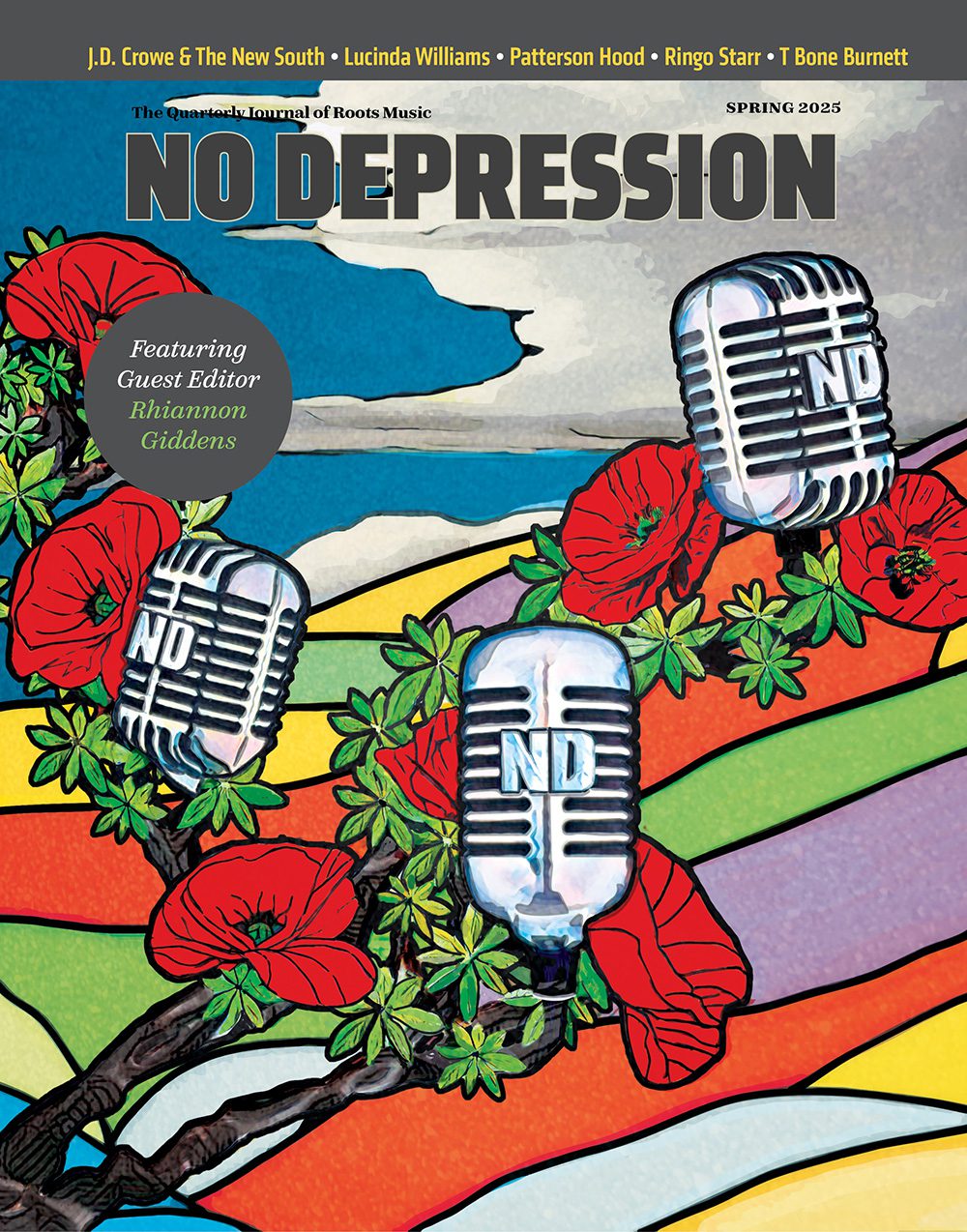Lucinda Williams – Chimes of freedom
“I was talking to my dad about journal writing,” she continued, her father being the poet Miller Williams, with whom she has done a few shows this year. “I said, ‘I’m concerned because I’m not writing in my journal like I used to write in my diary when I was a kid.’ My dad said, ‘You don’t really need to write in a journal because that’s what your songs are. That’s what you’re doing instead of writing in your journal.'”
The poet Wendell Berry, in one of his shortest but most indelible poems, wrote of this harrowing but pregnant process: “To know the dark, go dark. Go without sight/And find that the dark, too, blooms and sings/And is traveled by dark feet and dark wings.”
Much the same thing is happening on West. “Everybody’s lives contain some kind of suffering,” Lucinda said. “It doesn’t matter if you’re living in Iowa City or Monroe, Louisiana. It doesn’t matter how much money you have. It doesn’t matter what race you are, or whatever. Everybody’s going to suffer. It’ll be three years since my mother passed away in March. That never goes away.”
At least three songs on West could be addressed to or about Lucinda’s mother: “Are You Alright?” (“Could you give me some kind of sign?”); “Mama You Sweet” (“The pain hits a wall and doesn’t know which way to go”); and “Fancy Funeral” (“No amount of riches can bring back what you lost”). A trio of others — “Learning How To Live” (“without you in my life”), “Everything Has Changed” and “Where Is My Love?” — are ostensibly about the death of a romance, but it’s hard not to hear Lucinda’s mother haunting them as well.
“I hate to sound so cliche, but it helps to go through the darkness to see the light,” she said. “That’s what I feel my role is as an artist. That’s how I get things out. I do it for myself, therapeutically, but I also want to give it to other people.”
“When you’re depressed you put on Billie Holiday ’cause you can relate,” said Willner of this process. “It gives you hope. That type of music is so raw and so there. If you’re suicidal, you’re suicidal. But if you relate to something it helps you. You’re not alone.”
“It’s done in other art mediums,” Lucinda said, further elucidating the idea. “When you see paintings there’s a lot of darkness and a lot of light too. Or when you read fiction or poetry. I just think it’s vital to who I am as artist not to censor myself.”
Strangely enough, while anger and loss might loom like a cloud over much of West, Lucinda seems as happy as ever. Not only is she enjoying a sustained flush of artistic inspiration, in her fiance she says she’s finally found a “soulmate.”
“All the songs on the new record were written right before I met Tom,” she explained. “A lot of them deal with the darkness I had been in before I met him and came out of it. I sort of look at it like when I met Tom was sort of the beginning of my new life, ‘Before Tom’ and ‘After Tom.’ And you’ll see that on the next album. I have enough songs now for two more records. It’s amazing. I don’t what happened.
“The next record might still have some of the dark songs that are left over from the ‘Before Tom’ period. It might be a mixture. But there’s always going to be darkness. It never goes away. So there’s always going to be plenty to write about.”
It always comes back to the writing, to the need, as Dorothy Allison so indelibly put it, “to get it all down, to tell it again, to make sense of something — by god just once.” And not just to getting the words down, the process of which Lucinda sings so evocatively on the song of that name on West. But also, as Hal Willner and her collaborators on West have done, to capturing a certain tone of voice, to applying the right amount of pressure on a violin or guitar string, to finding just the right beat or suspending it. That is, to getting everything, not just the words, right, regardless of who might hear it as “wrong.”
ND senior editor Bill Friskics-Warren is the author of I’ll Take You There: Pop Music And The Urge For Transcendence. He wishes to thank the writer Steve Anderson for the insights into icons and metaphysics that are incorporated into this piece.




